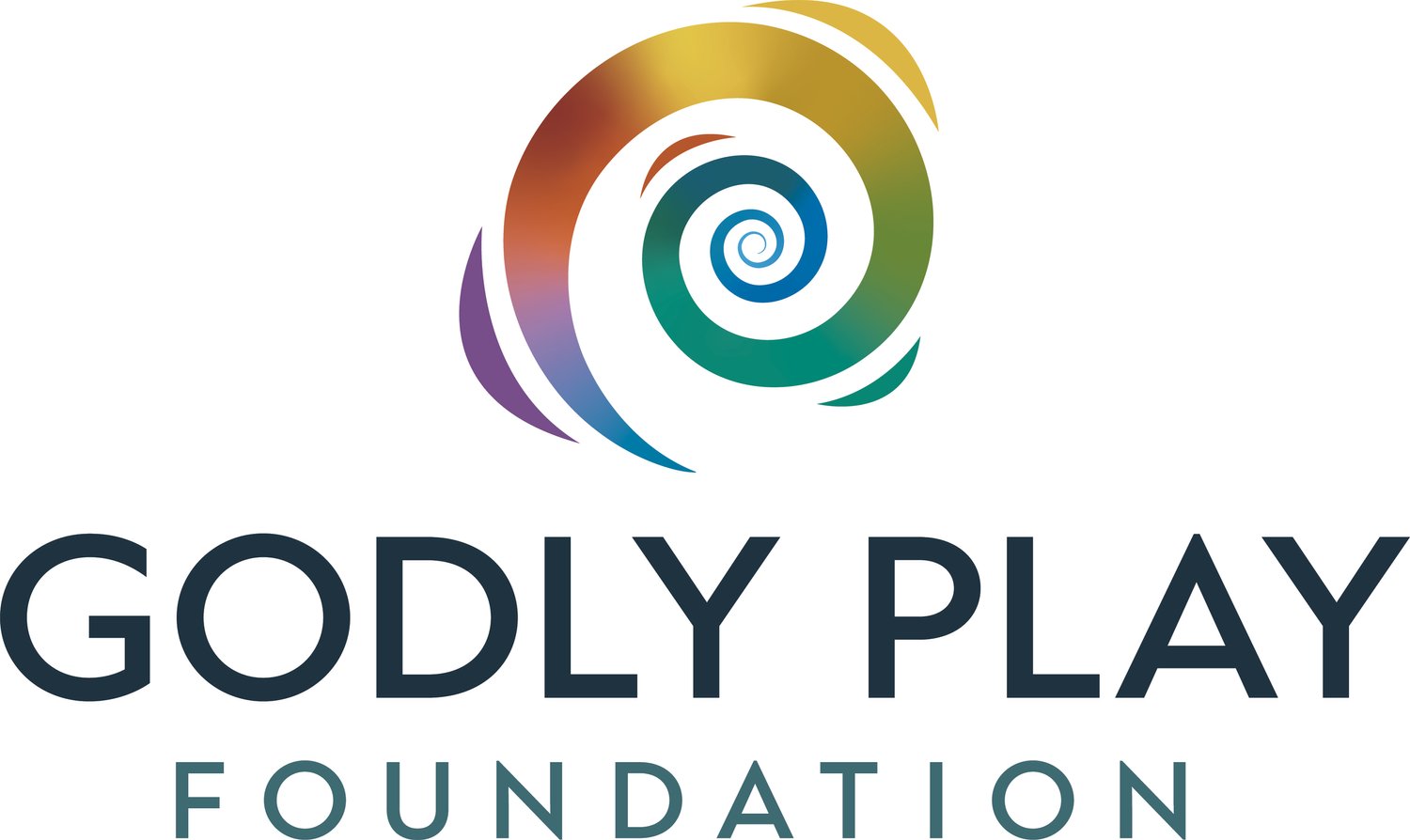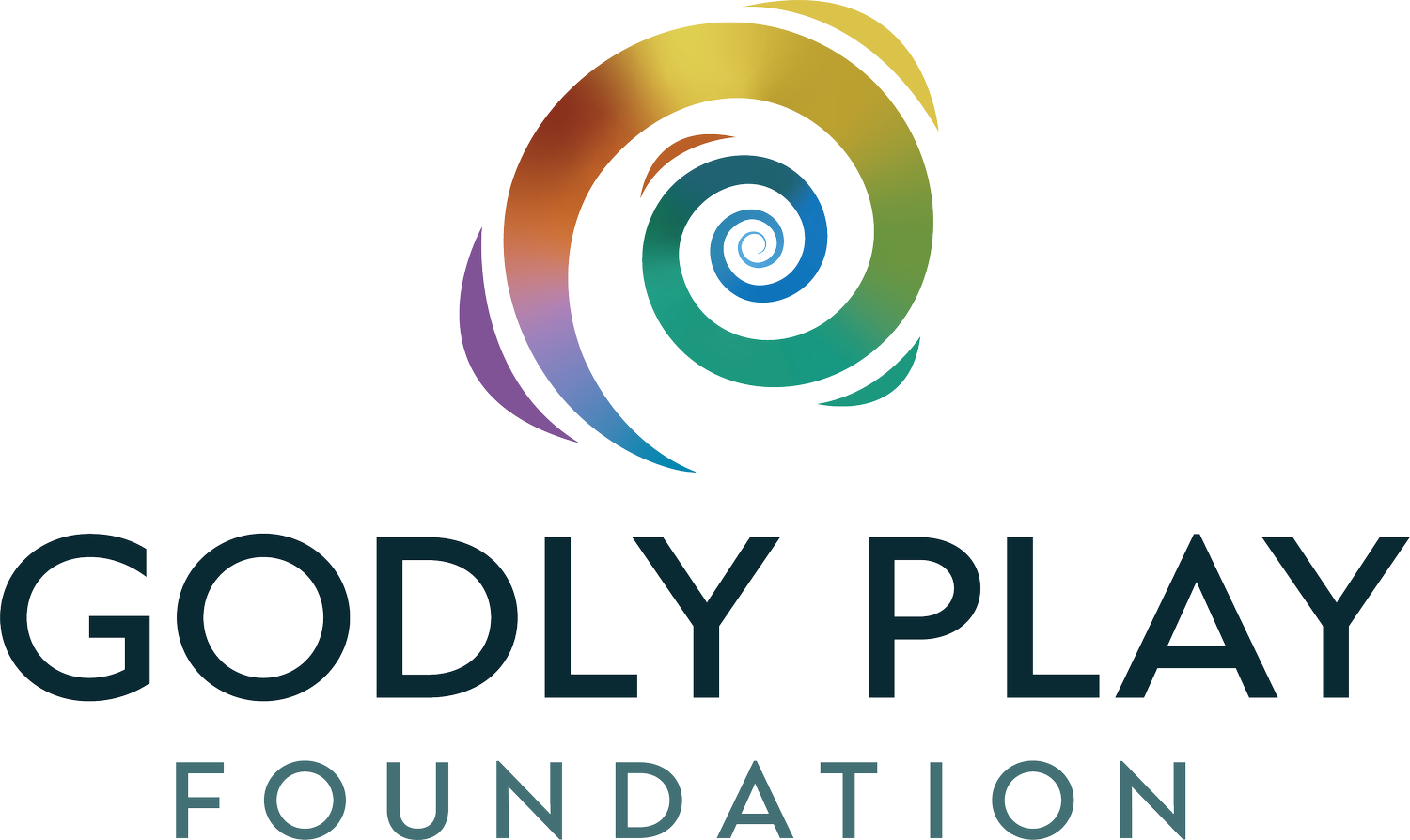The Full Curriculum: Taking Time to Wonder
The children’s eyes are fixed on the bucket, left in the desert like the scattered bits of golden thread.
“I wonder how we wonder?” the storyteller says.
One little boy answers, “It takes a very long time.”
The children in this Godly Play room are as young as three. In a world that feeds their restlessness but rarely their sense of wonder, Sunday school at Otey Memorial Parish (Sewanee, TN) has become an oasis of quiet and mental freedom in their week. Some of the youngest children have to remember how to get ready, and one in particular would climb in the storyteller’s lap during the story if this were allowed. The pauses in the story are sometimes met with a tense whisper, “And then what happened?”
Many of the children are hearing these core Bible stories for the first time. The wondering is often basic: I wonder what you like best? I wonder where you are in this story?
Younger children are not always able to articulate their insights very specifically, but in this circle they are learning a shared language for thinking more deeply about their faith. These are skills they carry into the next room, moving up in 2nd grade to more enrichment stories and synthesis lessons. As the little boy says, it takes a very long time to wonder.
Godly Play Trainer Laura McGuire also teaches children in Baltimore, MD, churches. She says, “Working with 4th and 5th graders is my absolute favorite. I love how they are able to synthesize Godly Play stories, develop materials for stories they feel are missing from the classroom, work on art projects from week to week, and share favorite stories with the younger classes. They do such thoughtful, deep work that working with them is a joy!”
US Trainer Arlene Decina has been sharing Godly Play stories with 4th graders for the last eight years at Burke Presbyterian Church in Burke, VA, where the program is now being extended to include fifth graders. Decina notes that using the full Godly Play curriculum provides an increasingly rare opportunity for older children for wondering and creative play. She says, “Seeing how each group, from year to year, uniquely creates community is sacred time indeed.”
At the end of a child’s last year of Godly Play, Decina and her mentor partner Lynn Miller give each one a smaller golden parable box. Inside is the Parable of the Good Shepherd the child can keep and share.
Sometimes adults think the church must respond to the epidemic of the short attention span by providing programs that are noisy and jump from one activity to another. But how does it look when the church seeks to lead its younger members into a habit of thinking deeply?
The Godly Play room is an antidote to the constant noise in many children’s over-programed lives. The contemplative atmosphere and the pacing build excitement and nurture the imagination. Rather than seeking to distract or entertain, Godly Play provides a framework for imagination that encourages longer attention spans, and rewards deep thinking.
The spiral curriculum deepens and expands along with the child’s development, allowing storytellers to tell old stories in new ways and draw out new insights. The Rev'd Suzi Robertson uses this language when retelling a story: “Last year when I told you this parable, you were younger. Maybe you came close to God. You wondered. I wonder if you are willing to walk through this parable with me, now that you are a year older? I wonder what will be different?”
Hearing a story for another time is often very different, regardless of the interval. For instance, children hearing the Parable of the Good Samaritan for the first time often zero in on the Samaritan as the only one who was a neighbor to the one who was hurt, had everything taken from him, and was left by the side of the road half dead. Hearing the parable again later, they may find a deeper meaning to the words of Jesus. They may insist that everyone in the story is a neighbor to everyone else, demanding compassion from all, to all. As we say in the parable stories, “Keep coming back again and again. One day the parable will open up for you.”
The Rev. Cheryl V. Minor, director of the Center for the Theology of Childhood, says a child needs to encounter a story about three times in order to attain the confidence and competence to make meaning with the story. The first year, the child learns where to find the story, how to get it out and put it away. The second year, the child remembers the story and begins to understand more. “In year three, the child is comfortable with the mechanics of the lesson and now can focus more carefully on the words. Now the teacher can expect the child to get the lesson on independently and begin to use it to explore their personal meaning.”
During middle and late childhood, a similar process unfolds, but from a new developmental perspective. The Core Lessons are extended, and Enrichment materials added to the classroom. “Then in late childhood,” Minor says, “the child can synthesize the lessons.”
The Godly Play curriculum includes Synthesis Lessons to encourage this development in thinking. For example, the synthesis for the sacred stories integrates key narratives to make a lesson about the Holy Trinity. This interactive story allows children to consider what the days of creation say about the works of Christ and vice-versa, for instance. Children begin to experience the Trinity in a way many adults have never had the opportunity to do.“
I always wonder,” said a child who had just experienced the Trinity synthesis, “if nothing was created yet, and nothing was here, what color would it be?”
An older child observed, “Nothing will ever stop, because God will keep creating, forever and ever. At the end of seven days, it goes back to one.”
Storytellers can also foster this process by telling any two stories side by side. Advanced Godly Play training teaches storytellers how to do this. US Trainer Sharolyn Browning explains, “It’s like Do-Re-Mi in the Sound of Music. Once you learn the notes (the Core Stories), you can make any number of combinations that help break open new meaning. In a very experienced class, one could be challenged to pair up any two random stories and see where that takes the circle.”
Browning notes that, according to the Montessori planes of development, children between 9 and 12 years old are consolidating what they have learned in the 6-9 age range. Continuing to use Godly Play during the elementary school years gives them a process for consolidating and making meaning of the stories they have learned. They are also ready to consolidate what each child has learned, becoming more comfortable with group work and group projects. By adolescence, children who have spent years in the Godly Play circle develop an inner working model of the Christian language.
Susan Mallison, who holds Godly Play Core Trainings across the Midwest, has been privileged to teach many children from age 3 until the start of middle school. She says, “It’s wonderful to hear how their wondering changes and to witness their work time – both individual and group work.” She recalls a small boy who would only sit and wonder in silence. Every session, he made no comments – until he was ten years old.
The children in Mallison’s circles continue Godly Play until they are ready for Journey to Adulthood. She says, “They take with them the wondering and the community they have built.”
Mallison says, “We tell Godly Play stories to them again as a part of their confirmation and pilgrimage preparation, and some have said it feels like coming home.” Some of the children she taught at age three and four, are now 28 and 29 years old.
Director of Communications and US Training Regan Schutz has observed the effects of this spiral growth in many churches and several schools where she shares Godly Play. Inspired by what she has learned from and about children’s spirituality in the classroom, Schutz is now pursuing her MDiv at the School of Theology in Sewanee. She says, “I love watching the full curriculum run through the classic development of language acquisition: hear it, speak it, think it.”
Schutz says the full benefit of Godly Play is realized when a child is immersed in the program at least through the grade school years. She remembers a session in which a group of precocious 2nd grade girls played out a Deep Well scenario in which they were at the bottom of the well filling people’s buckets. One child said, “I know there’s a cup somewhere in this room, and I really need that cup to fill people’s buckets with this water.” The chalice from Good Shepherd World Communion was retrieved.
Schutz says, “She had not fully internalized the theological connections and implications of her scenario. She knew how it should work and was speaking the Christian language without yet thinking in it. When older children participate in the full curriculum, they are conscious of those connections. They can do synthesis stories because each of the individual stories has its own meaning. They are aware of the theology they are using and developing, and it allows them to internalize, realize, and act on their work in a more complete way. It’s the complete circle.
--Jeannie Babb, Godly Play Foundation
To find a Core Training or Advanced Training in your region, keep an eye on the Training Schedule.
The Parable of the Deep Well and many other Godly Play stories are available on the Godly Play Foundation’s YouTube channel.






